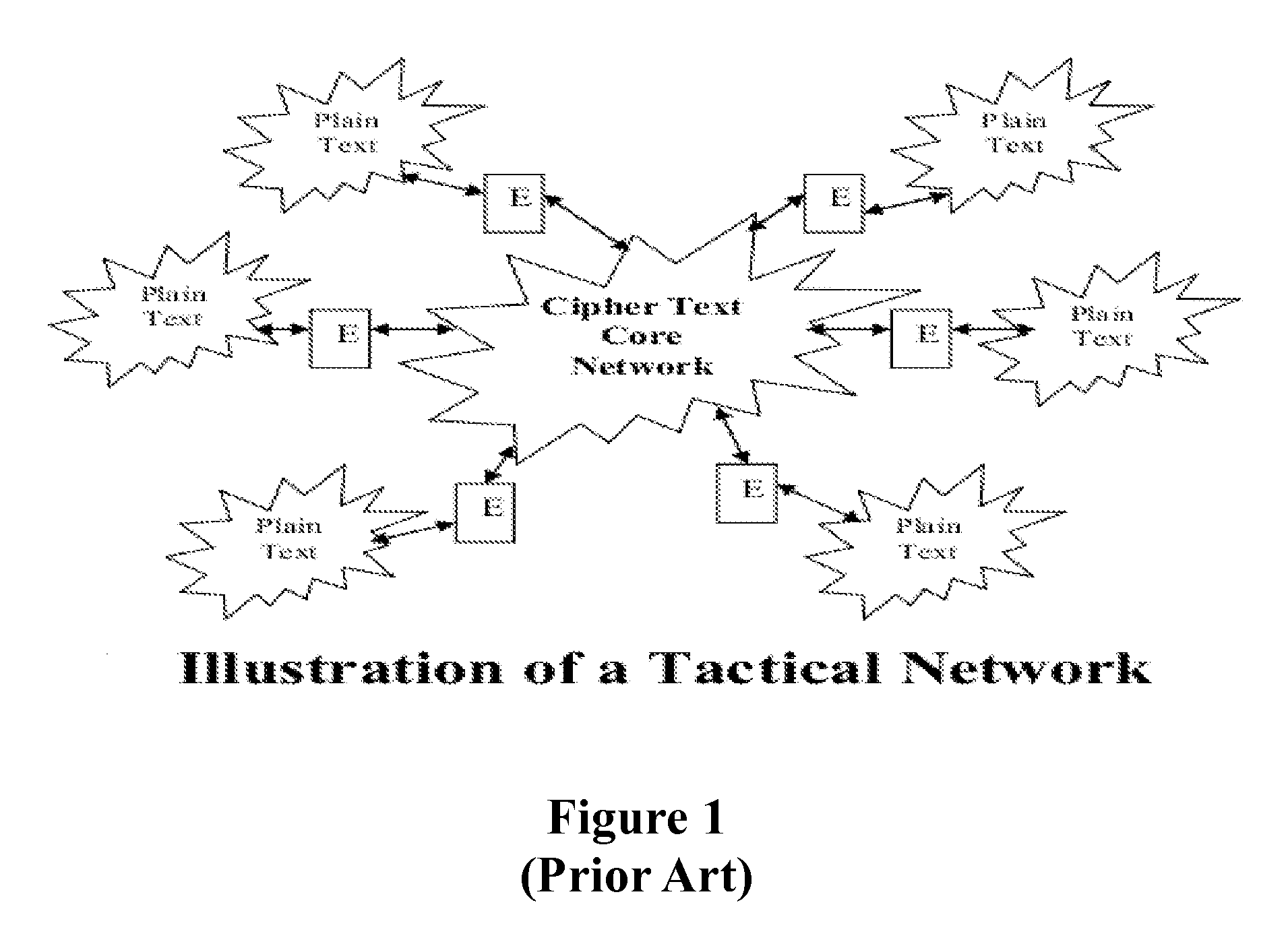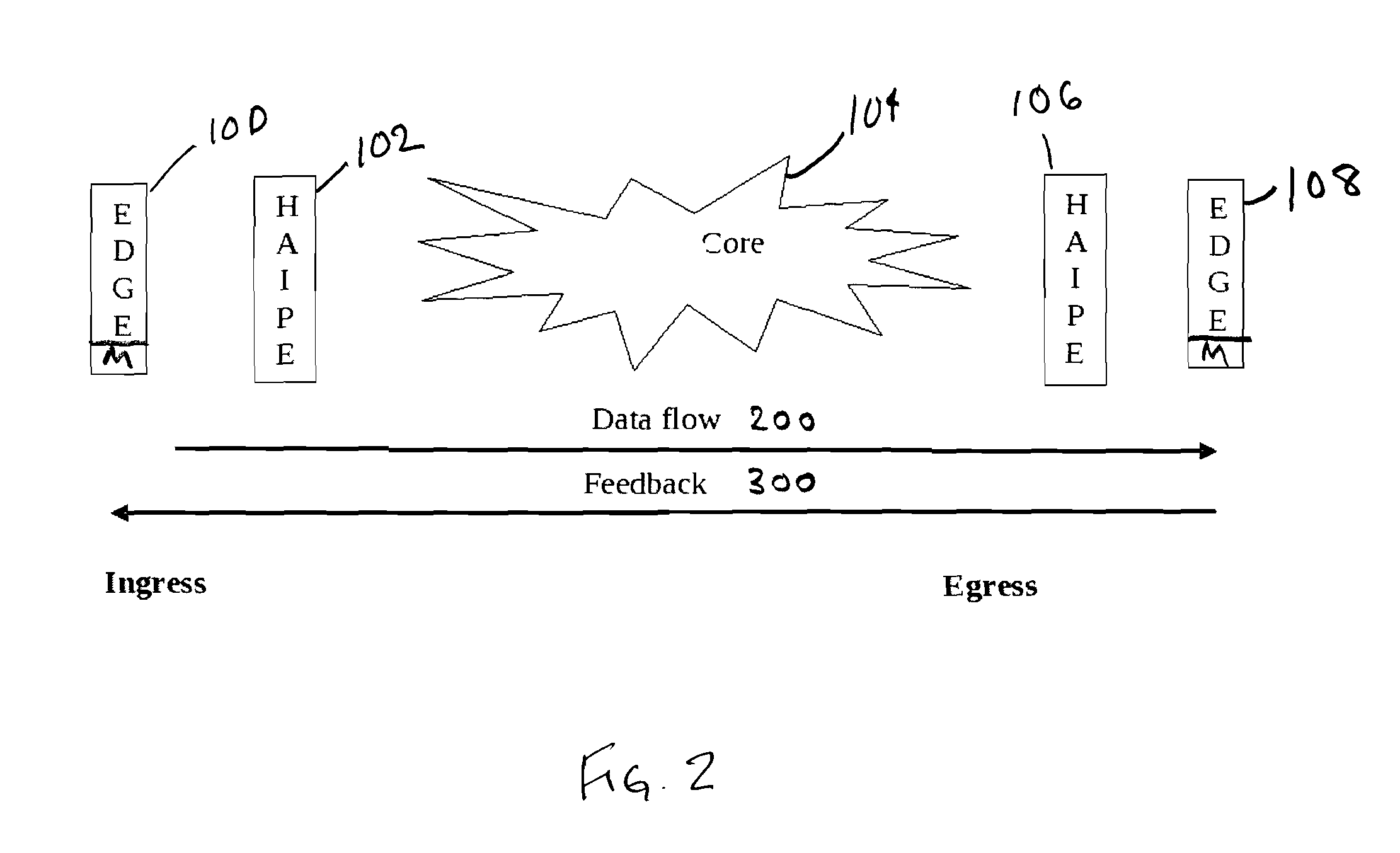Measurement Based Admission Control Using Explicit Congestion Notification In A Partitioned Network
a partitioned network and congestion notification technology, applied in data switching networks, frequency-division multiplexes, instruments, etc., can solve problems such as observed increase in delay, inaccurate use of time-stamp derived delay data to calculate congestion, and several deficiencies, so as to reduce the percentage of received packets indicating, reduce congestion, and improve the effect of congestion
- Summary
- Abstract
- Description
- Claims
- Application Information
AI Technical Summary
Benefits of technology
Problems solved by technology
Method used
Image
Examples
Embodiment Construction
[0025]In the primary embodiment of the invention the congestion level at the egress edge of the network is calculated based on the traffic type (i.e., data, video & voice). The congestion levels for all traffic types are sent back to the ingress edge device via a UDP packet.
[0026]To calculate the congestion level, at the egress edge device, the percentage of received packets having the “congestion encountered” (CE) condition set within a given period of time is calculated for each traffic type. The congestion percentage is calculated first for higher priority traffic. Priority levels with each class range may be, for example, “routine” (lowest), “priority,”“immediate,”“flash,” and “flash override.”
[0027]For example, if the current congestion level is indicating congestion for routine traffic for a particular traffic type, and the incoming packets at the egress edge device indicate that congestion is being detected for priority traffic for that type of traffic, the congestion level f...
PUM
 Login to View More
Login to View More Abstract
Description
Claims
Application Information
 Login to View More
Login to View More - R&D
- Intellectual Property
- Life Sciences
- Materials
- Tech Scout
- Unparalleled Data Quality
- Higher Quality Content
- 60% Fewer Hallucinations
Browse by: Latest US Patents, China's latest patents, Technical Efficacy Thesaurus, Application Domain, Technology Topic, Popular Technical Reports.
© 2025 PatSnap. All rights reserved.Legal|Privacy policy|Modern Slavery Act Transparency Statement|Sitemap|About US| Contact US: help@patsnap.com



